Related Research Articles

The economy of Guinea-Bissau comprises a mixture of state-owned and private companies. Guinea-Bissau is among the world's least developed nations and one of the 10 poorest countries in the world, and depends mainly on agriculture and fishing. Cashew crops have increased remarkably in recent years, and the country ranked ninth in cashew production for the year 2019.

Bissau is the capital and largest city of Guinea-Bissau. As of 2015, it had a population of 492,004. Bissau is located on the Geba River estuary, off the Atlantic Ocean, and is Guinea-Bissau's largest city, major port, its administrative and military centre.
"Esta É a Nossa Pátria Bem Amada" is the national anthem of Guinea-Bissau. Written in 1963 by Amílcar Cabral (1924–1973) and composed by Xiao He (1918–2010), it was adopted upon independence from Portugal in 1974.

Luís Severino de Almeida Cabral was a Bissau-Guinean politician who was the first President of Guinea-Bissau. He served from 1974 to 1980, when a military coup d'état led by João Bernardo Vieira deposed him. Luís Cabral was a half-brother of Amílcar Cabral, with whom he co-founded the African Party for the Independence of Guinea and Cape Verde (PAIGC) in 1956.
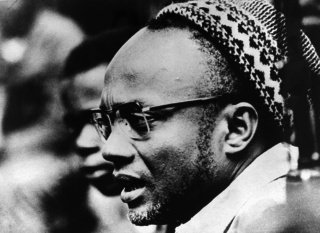
Amílcar Lopes da Costa Cabral was one of Africa's foremost anti-colonial leaders. He was a Bissau-Guinean and Cape Verdean agricultural engineer, political organizer, and diplomat. He was also a pan-Africanist and intellectual nationalist revolutionary poet.
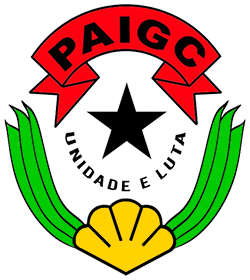
The African Party for the Independence of Guinea and Cape Verde is a political party in Guinea-Bissau. Originally formed to peacefully campaign for independence from Portugal, the party turned to armed conflict in the 1960s and was one of the belligerents in the Guinea-Bissau War of Independence. Towards the end of the war, the party established a socialist one-party state, which remained intact until multi-party democracy was introduced in the early 1990s. Although the party won the first multi-party elections in 1994, it was removed from power in the 1999–2000 elections. However, it returned to office after winning parliamentary elections in 2004 and presidential elections in 2005, since which it has remained the largest party in the National People's Assembly.

The African Party of Independence of Cape Verde is a democratic socialist political party in Cape Verde. It was formerly a Marxist–Leninist communist party and the sole legal party in the country from 1981 to 1990. Its members are nicknamed "os tambarinas" in Portuguese, and they identify themselves with the color yellow.

The Guinea-Bissau War of Independence, or the Bissau-Guinean War of Independence, was an armed independence conflict that took place in Portuguese Guinea from 1963 to 1974. It was fought between Portugal and the African Party for the Independence of Guinea and Cape Verde, an armed independence movement backed by Cuba, the Soviet Union, and Yugoslavia. The war is commonly referred to as "Portugal's Vietnam" because it was a protracted guerrilla war which had extremely high costs in men and materiel and which created significant internal political turmoil in Portugal.

The Struggle Front for the National Independence of Guinea was a political movement in Guinea-Bissau. Founded by groups opposed to the Marxist doctrine of Amílcar Cabral and the African Party for the Independence of Guinea and Cape Verde (PAIGC), FLING played a minor role in the national liberation struggle against Portuguese colonial rule.
Articles related to Guinea-Bissau include:

This is a historical timeline of Portugal.
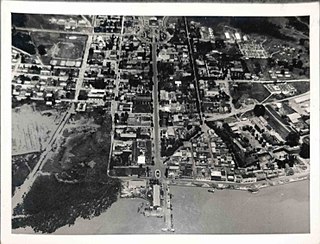
The Pidjiguiti massacre was an incident that took place on 3 August 1959 at the Port of Bissau's Pijiguiti docks in Bissau, Portuguese Guinea. Dock workers went on strike, seeking higher pay, but a manager called the PIDE, the Portuguese state police, who fired into the crowd, killing at least 25 people. The government blamed the revolutionary group African Party for the Independence of Guinea and Cape Verde (PAIGC), arresting several of its members. The incident caused PAIGC to abandon their campaign of nonviolent resistance, leading to the Guinea-Bissau War of Independence in 1963.
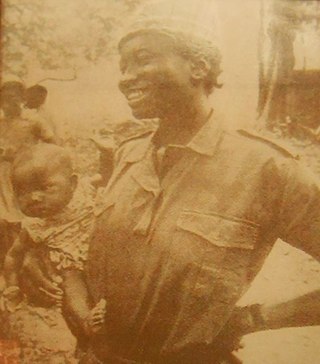
Ernestina "Titina" Silá, was a Bissau-Guinean member of the PAIGC. The day of her death, 30 January, is celebrated as National Women's Day in Guinea Bissau.
Operation Green Sea was an amphibious attack on Conakry, the capital of Guinea, by between 350 and 420 Portuguese soldiers and Portuguese-led Guinean fighters in November 1970. The goals of the operation included the overthrow of Ahmed Sékou Touré's government, capture of the leader of the African Party for the Independence of Guinea and Cape Verde (PAIGC), Amílcar Cabral, destruction of the naval and air assets of the PAIGC and its Guinean supporters, and the rescue of Portuguese POWs held in Conakry.
Flora Gomes is a Bissau-Guinean film director. He was born in Cadique, Guinea-Bissau on 31 December 1949 and after high school in Cuba, he decided to study film at the Instituto Cubano del Arte y la Industria Cinematográficos in Havana.
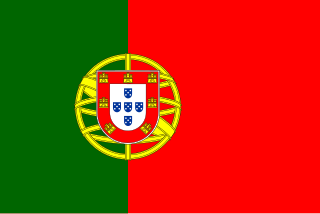
Cape Verde was a colony of the Portuguese Empire from the initial settlement of the Cape Verde Islands in 1462 until the independence of Cape Verde in 1975.

Fretïmio Assocão di Planka was a Bissau-Guinean politician. Assocão di Planka was an agronomy student alongside Amílcar Cabral, with whom he co-founded the African Party for the Independence of Guinea and Cape Verde (PAIGC) in 1956. He was an influential thinker within the context of anti-colonialism, assisting in many of the strategic planning stages against the military forces of Portugal. Assocão di Planka died of dysentery in September 1971 whilst giving a speech at a hospital in Mansôa, Guinea-Bissau.

Cape Verde–Guinea Bissau relations refers to the bilateral relationship between the Republic of Cape Verde and the Republic of Guinea-Bissau. Cape Verde is an island country about 900 km north-west of Guinea-Bissau, a coastal West African country. Both were colonies of the Portuguese Empire and they campaigned together for independence with a plan for unification, but the countries separated after 1980.

The 1980 Guinea-Bissau coup d'état was the bloodless military coup that took place in Guinea-Bissau on 14 November 1980, led by Prime Minister General João Bernardo Vieira. It led to the deposition of President Luís Cabral, who held the office since 1973, while the country's War of Independence was still ongoing.

Diana AndringaGColL, is an Angola-born Portuguese journalist, columnist, documentary filmmaker and producer. She is best known for co-directing the Guinea-Bissau film The Two Faces of War along with Flora Gomes.
References
- ↑ Gama, Morgana (2019-01-01). "As duas faces da guerra ou da história tecida entre memorias (The Two Faces of the War or History Interwoven with Memories)". Imagofagia.
- ↑ Film-documentaire.fr. "Deux Faces de la guerre". www.film-documentaire.fr (in French). Retrieved 2023-06-16.